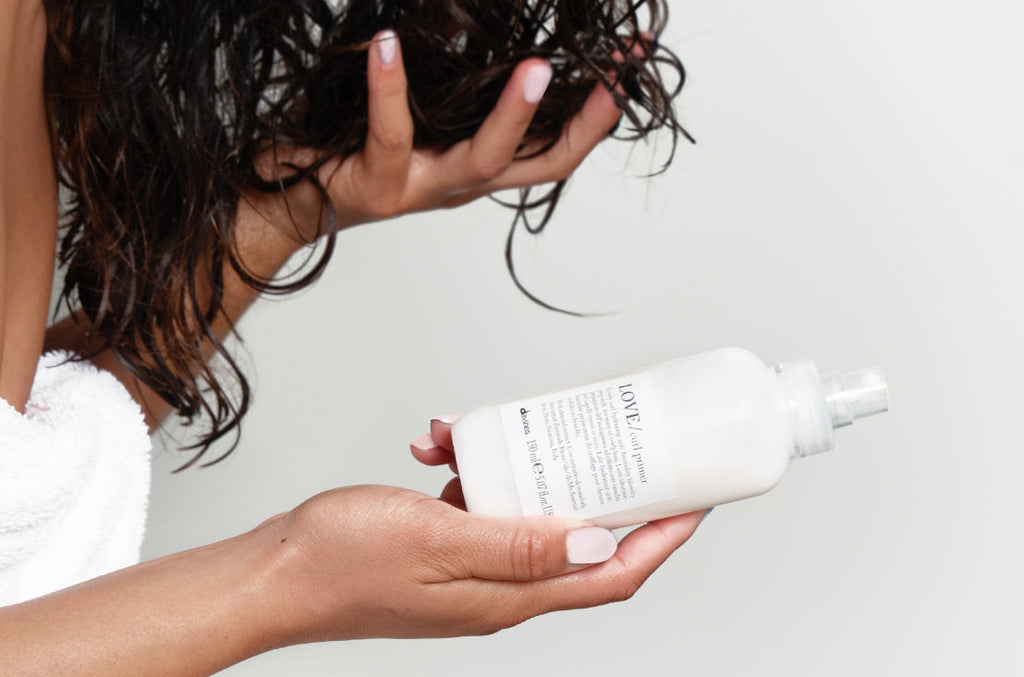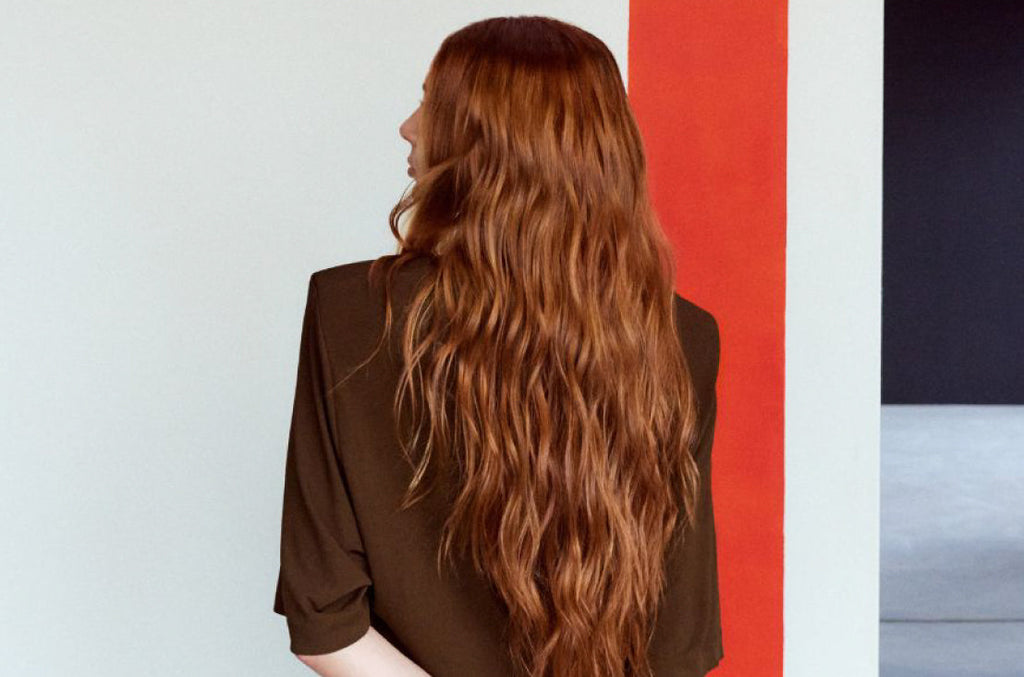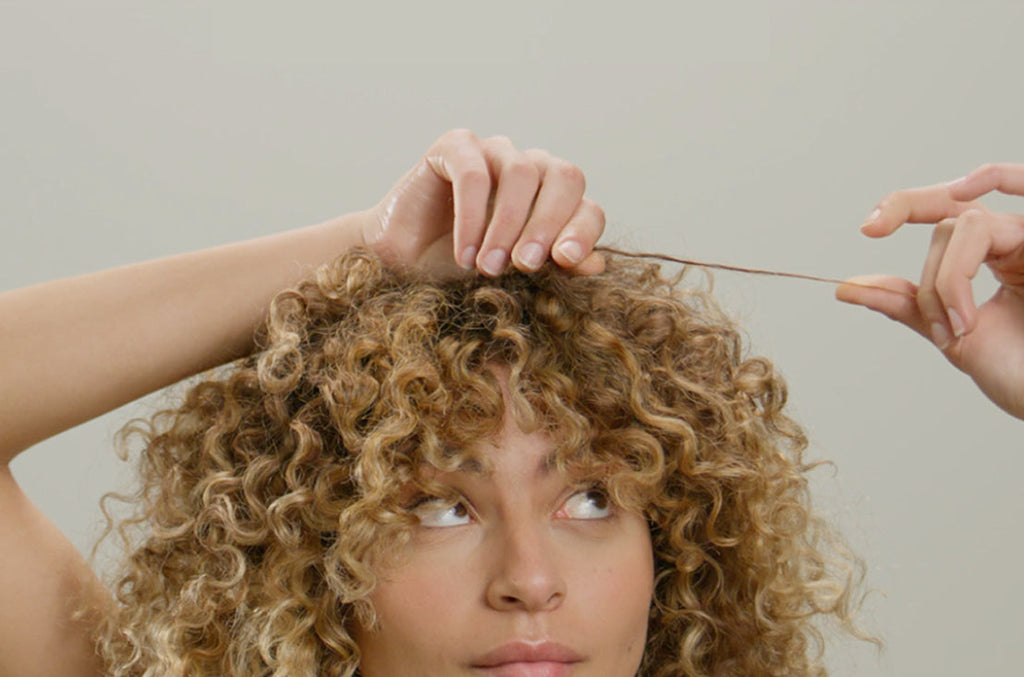Pay with Klarna
Free Carbon Neutral Shipping On Orders $75+, Plus Free Samples!
Pay with Klarna
Free Carbon Neutral Shipping On Orders $75+, Plus Free Samples!
Ombré and balayage hair are often used interchangeably. These low-maintenance hair color techniques have become the standard among it-girl hairstyles, but is there a difference between balayage and ombré hair?
The French word balayage translates to “sweep". Balayage is the term used to describe the way the color is swept onto the hair with a brush during the highlighting or color process. Balayage is a free hand painting color technique, in which color is painted onto select strands. The color application begins about two inches away from the roots and becomes gradually heavier as it moves down the strands, starting very fine at the top of the hair and gradually getting thicker though the mid-lengths and ends. Unlike traditional foil highlights, balayage highlights focus more to the ends and gets blended or feathered out as it moves up the hair. As your roots grow out, the balayage highlights stay on top growing out evenly and softly, without the harsh color separation line you get from traditional foil highlights. Because the bleach color is concentrated on the surface of each section of hair, the underside remains darker, resulting in a natural looking hair color with softer, less noticeable root regrowth. Balayage can be done on any hair color, from blonde and red to brunettes — light, medium and dark. It works best on medium length to long hair, starting down an inch or two from the root, but can also be done on shorter hair as well.
Ombré is also a french word and means “to shade.” Ombré describes a dip-dye effect in which the hair seamlessly graduates from darkest to light. Ombré hair is typically done with color or lightener being placed horizontally with full saturation of the section and then blended upward to diffuse the line, resulting in a gradient color transition without a visible line that separates dark from light. While the roots stay dark, the hair slowly lightens down the length of the strands until it hits the lightest, most highlighted point at the ends of the hair. A more subtle version of ombré is called sombré. A sombré hairstyle features less of a contrast between the two shades. Another variation of ombré is called color melting. Color melting is the result of two or three hair color shades being blended together on each strand, using the side of the hair color application brush so that all the colors appear to melt into each other. Color melting can be done with natural shades, but is a great option if you’re looking to change up your look with a fun color like bright pink, violet or teal — really any color of the rainbow looks gorgeous with a color melt!
The major difference between balayage vs ombré is that balayage is a technique, and ombré is a gradient of color. Ombré is when a stylist uses the balayage technique to create a color contrast that begins darkest at the roots, blends into a rich medium shade towards the middle, and finishes with the lightest parts at the ends of the hair. You need balayage to achieve ombré hair, but balayage on its own can give many different effects by using different shades strategically throughout the hair for a multi-dimensional finish. So balayage is the technique, and ombré is the style. Balayage doesn't have to be ombre, but ombre has to be balayage.
Stylist and balayage artist Toni Jennings of Davines concept salon Propaganda Hair Group in Austin, TX, says: “Every colorist will have their own interpretation of what balayage and ombre look like, but I see the main difference between ombré and balayage as the amount of contrast and dimension throughout the hair. Balayage has a more organic grow out period, with lighter pieces adding dimension throughout the hair, with a very subtle line of regrowth. Ombré is bolder, with the lightened hair concentrated at the end, eliminating the dimension.”
If you’re looking to lighten up your natural hair color with some low-maintenance highlights, balayage or ombré may be what you’re looking for. But how do you know which is right for you? Balayage looks just as good on both long and medium length hair. Since ombré blends two colors together, it works best on hair that’s long enough to show off the full effect. Because of the single process color, ombré grows out more quickly than a balayage. Balayage is perfect if you’re looking to go longer in between touch-ups, as it grows out much less stark than ombré.
Ultimately you should consider your hair length, current hair color, the color you want to achieve, and how often you’re looking to go back inn for touch-ups. Toni Jennings recommends that you bring in photos to show your stylist what you like. “Photos speak louder than words. If you can’t verbalize what you want, why not just show me? Your stylist should then go through a thorough consultation, and together the two of you will figure out whether balayage vs ombré is right for you.
1. Prepare your strands.Before you balayage or ombré your hair, see your stylist for a protein treatment and double up at home with a moisturizing mask a month prior to going back for your highlights. This will help strengthen your stands and saturate them with hydration before coloring it.
2. Use the right shampoo and conditioner.Once your hair has been chemically treated, you should wash it less often, whatever that means for your particular hair type. Toni Jennings recommends using the Alchemic Silver Shampoo and Conditioner to maintain your balayage or ombré to maintain maintain and protect your color, and the health of your hair.
3. End with a shot of cool water.Everyone can benefit from this trick, but especially those with color-treated hair. Finish your hair washing with a quick blast of cool water to close the hair cuticles, reducing fade and promoting shine.
4. Hydrate. Hydrate. Hydrate.We can’t stress this enough. Chemically treated hair is dehydrated. It’s important to nourish it daily with a leave in-treatment to repair split ends and seal the cuticles.
5. Protect your hair from heat.Over-using hot styling tools like flat irons aren't great for any hair, but they are especially damaging to hair that’s been lightened. So if you must heat style, it's essential to minimize the damage with a heat protection spray.
6. Get a gloss treatment.The best way to keep your color looking pretty in between highlighting sessions is to schedule regular gloss treatments with your stylist. Your balayage or ombré will stay looking just as shiny and new as it did if you’d done it again, without the damaging chemicals.
7. Mask regularly.A hair mask gives your parched, highlighted strands a powerful dose of hydration. Use a hair mask one at least once a week to deeply moisturize thirsty strands.
Photo by Lindsay Del Colletti
8. Use a shine spray.Shine sprays have light reflecting particles that help illuminate your hair, making it look healthy and shiny. Mist your hair with a shine spray as the last step when styling to add brilliance to your balayage or ombre hair.
9. And try to avoid...Stay away from chlorine and never overlap the lightener when re-touching. This can cause the hair to become limp and lifeless and eventually break.
Balayage and ombré are two of the hottest highlighting trends seen all over celebs, it-girls street style stars. Both are designed to make root regrowth look as natural as possible, making them low-maintenance and easy to maintain. Balayage is a free hand painting technique, focusing on the top layer of hair, resulting in a more natural and dimensional approach to highlighting. It’s characterized by intermittent highlights dispersed throughout the hair, almost like subtle strokes of paint. Ombré hair, on the other hand, starts off darkest at the root and transitions to a lighter shade, with the lightest parts at the ends, making it a less subtle, more striking hairstyle. Balayage and ombré may look somewhat similar, but they are not the same. If you’re thinking of lightening up your locks and want to try balayage or ombré, bring in pictures of what you like to show your stylist, and together the two of you can decide what’s right for you. And in addition to Alchemic Silver Shampoo and Conditioner, ask your stylist what other Davines favorites they recommend to keep your highlights looking fresh. For a Davines concept salon near you check our salon locator.
By Jaclyn LaBadia, featured contributor
cover photo by Cassell Ferere
Subscribe
Sign up to hear about product recommendations, styling how-to's, tips & tricks, and more!
Plus, Free Shipping on your first order!
Join our newsletter to enjoy free shipping on your first order.
By submitting this form, you agree to receive the latest news, updates, promotions, and other marketing information from Davines North America, Inc. by email.



Leave a comment
Comments will be approved before showing up.